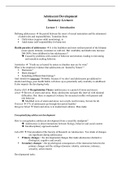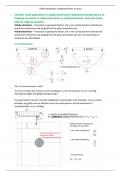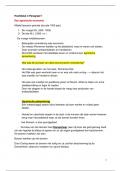College aantekeningen
Samenvatting alle Hoorcolleges (1-12) Adolescent Development (Deeltentamen 1-3)
- Instelling
- Universiteit Utrecht (UU)
Deze samenvatting bevat alle Hoorcolleges (1-12) van het vak Adolescent Development, in het Engels. Deeltentamen 1: Hoorcollege 1-4 Deeltentamen 2: Hoorcollege 5-8 Deeltentamen 3: Hoorcollege 9-12
[Meer zien]













